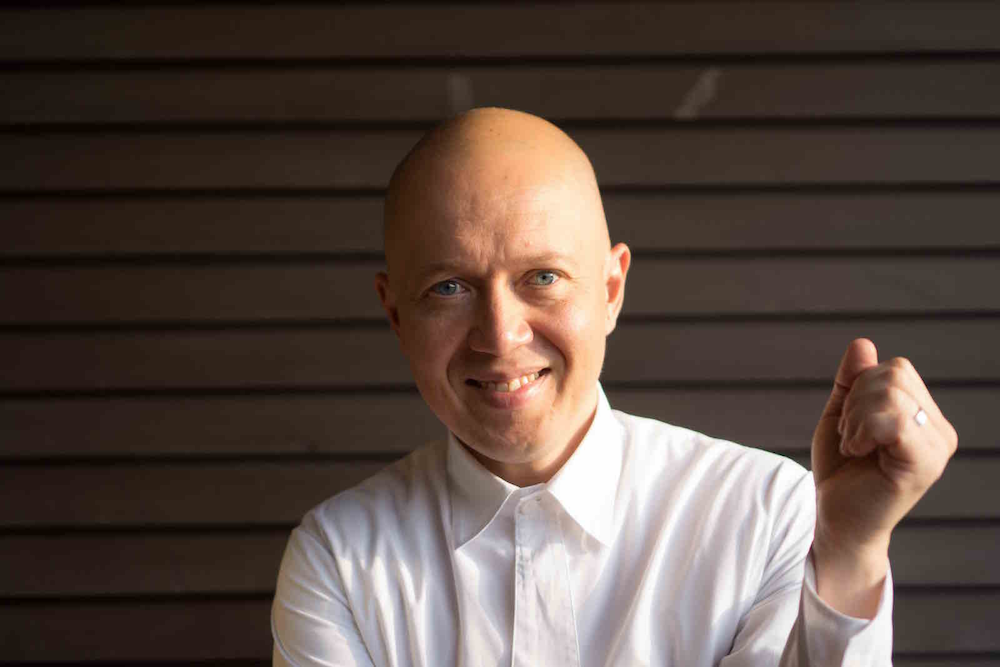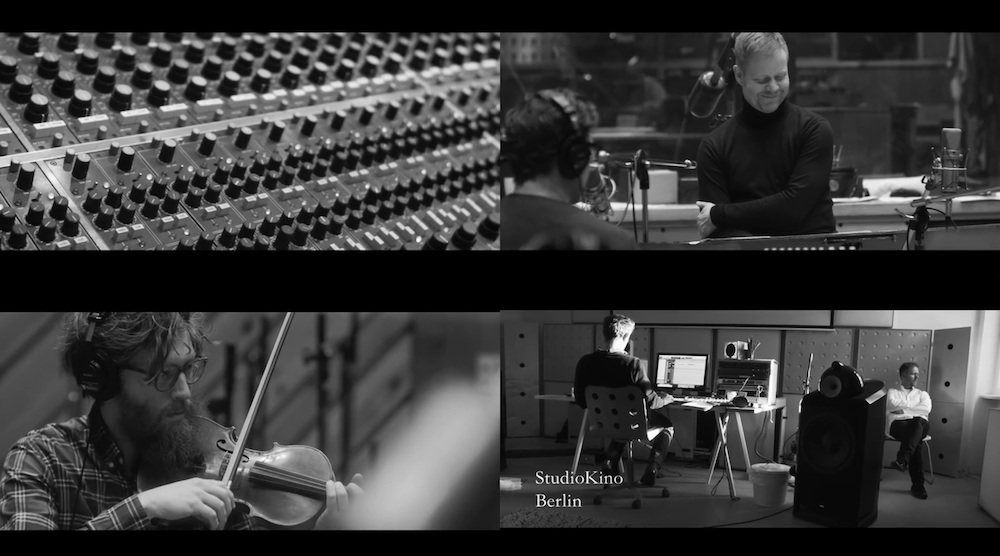Music as medicine – treatment by personalised music

Visions of future wellbeing and health include individually selected music used as personalised medicine to treat pain and illnesses, and improve motivation. Musician and entrepreneur Marko Ahtisaari leads a start-up in Boston called The Sync Project that is conducting research on the impact of music on the human body and health.
Visions of future wellbeing and health include individually selected music used as personalised medicine to treat pain and illnesses, and improve motivation. Musician and entrepreneur Marko Ahtisaari leads a start-up in Boston called The Sync Project that is conducting research on the impact of music on the human body and health.
When we hear music, the motor areas of our brain activate as if we were already moving to the music. Music activates the same neural systems as traditional psychostimulants – in other words drugs – and music has been found to reduce the use of pain killers after surgical operations.
Music’s impact on motor functions is being applied to the symptoms of Parkinson’s disease, for example, when the patient would like to walk but cannot coordinate movement. Could we use music in a more targeted and purposeful way as a treatment, or could music reduce the use of traditional drugs?
Traditionally the biggest challenge has been that music preferences are very personal, and music’s impact on the brain and body varies from person to person. The development of research methods and machine learning, however, enables individual favourites and their effects to be studied to produce music choices that match these preferences and elicit desired physiological reactions.
This development forms the foundation of Boston-based start-up The Sync Project, a company that is collecting a large database about music’s impact on human physiology, and based on new research is creating services and products that will improve our health and wellbeing. With these services, it is possible to select effective music according to users’ personal music preferences and physiological responses.
“We all know intuitively how music affects us,” says The Sync Project’s CEO Marko Ahtisaari. “All of us already use music in some way as a medicine to help us relax, focus, or get ready for a performance. Referring to Alvar Aalto, music is a big human fundamental, one of the basic elements of life.”

From elite sports to every day consumption
When Marko Ahtisaari left his design director’s post at Nokia in 2013, he was invited to join MIT Media Lab’s Director’s Fellowship programme. Those working in the programme both teach and do research together with MIT’s students.
Two years later in 2015 Ahtisaari became one of the founders and the CEO of Sync Project. At the same time he moved to live in Boston.
The intersection of music, technology and science is a familiar place for Ahtisaari who has also worked as a musician. He studied violin when he was younger, and composition and theory later at Columbia University in New York where he also started to play bass in various assemblies. Since teenage, Ahtisaari has listened to and created soundscapes and ambient music.
The Sync Project founders also include Yadid Ayzenberg who completed his PhD at the MIT Media Lab and Ketki Karanam who did her doctoral thesis in Systems Biology at Harvard. The company became possible thanks to two major trends in technological development: advances in music and neuroscience research and smart phones.
“We felt that research on how music affects the human brain and body had advanced, but extensive information resources were still missing. Music’s impact on human physiology is currently studied through small samples. However, people listen to music using their smart phones every day. As phones develop, listening can be measured in natural situations and environments; during normal life, that is.”
The Sync Project is working on a pilot study with Aki Hintsa, a doctor well known within sports medicine and the Formula 1 circles, and Hintsa Performance, his company specializing in top athlete coaching between Helsinki and Geneva, Switzerland. The study explores how music affects maximum performance and recovery during interval training. In practice, this is based on music’s impact on heart rate, as previous studies have shown that music affects our whole cardiovascular system.
“We first survey what kind of music people usually choose if they listen to music while training. This gives us an idea of a person’s general music preference,” Ahtisaari explains. “We then look at the acoustic features of this type of music and select more music with the same features.”
The Sync Project is funded by Puretech, a research and development company, and works with top music-neuroscience researchers from McGill University in Montreal, among others. The University of Helsinki is also among the top institutes in the world doing research on how music helps recover from strokes, for example.

Smart phones as research equipment
During the next 1 to 2 years, Sync Project will research topics that nearly anyone can participate. This will enable collecting an enormous amount of data. Later this year, the company is to launch some means and methods by which to enable participation in the project.
“When anyone can participate, we are entering a wild world of opportunities that can involve a new way of doing scientific or applied research,” Ahtisaari says.
Sync Project is developing an algorithm for analyzing and producing personal data that reads and models the acoustic features of music according to the listener’s physiological reactions. These studies use commercially developed, adequately accurate sensors. The company does not manufacture the sensors but develops a platform that is to enable faster collection of research data.
“There will be more and more sensors inside mobile phones. It will take a while for the phone population to renew, but the sensors already included in our phones can detect motion very accurately, for example. Accurate heartbeat measuring can take us far in many respects,” Ahtisaari says. “Tight cooperation with the best researchers has been critical regarding the implementation of new sensors. We learn from them what kind of new solutions are relevant for us.”
“At the moment, we use so called normal music to quickly get an idea of the style that is meaningful and interesting for an individual, what they have heard before, and thus what unprecedented music they may want to listen to in the future. Regarding possible musical interventions in the future, soundscapes may work in some cases. Some studies indicate that soundscapes and nature sounds, for example, can be effective.”

A design challenge
Sync Project uses its blog to share research results and articles. According to Ahtisaari, the articles’ purpose is to share information about the studies so that other active people in the field can obtain and apply the knowledge.
For planners, designers, companies, and legislators, enabling the measuring of health and wellbeing experiences and collection of “hard data” opens doors and creates new possibilities for product development, new philosophies and operational patterns.
“One of the most interesting design questions at the moment is how to combine design and science – not referring to design and engineering, which is the tradition of industrial production. We are now looking at the fundamentals – the basic questions about the human being as a combination of complex biological systems. This will also impact what kind of user interfaces are developed in the future. I don’t mean the button locations in the next Android version but what is the next UI system that is to replace or coexist with current screens.”
“I see a huge design challenge in developing methods that do not invade the human body,” Ahtisaari continues. “These kind of interactive methods include video games and music and how they can be used to directly influence the brain and the body to increase wellbeing and health.”
Heini Lehtinen is a writer and designer based in Brussels, Belgium. She works on strategic, content-based creative direction with emphasis on social sustainability. She is a co-founder of Fictional Collective, a network of designers, architects, researchers and writers, and Fictional Journal, a platform and online publication investigating societal contexts of design. Lehtinen has previously worked as an editor-in-chief of Helsinki Design Week Magazine, published until 2011, and design-oriented We Are Helsinki magazine. She holds a Master of Design degree in Social Design from Design Academy Eindhoven in the Netherlands.